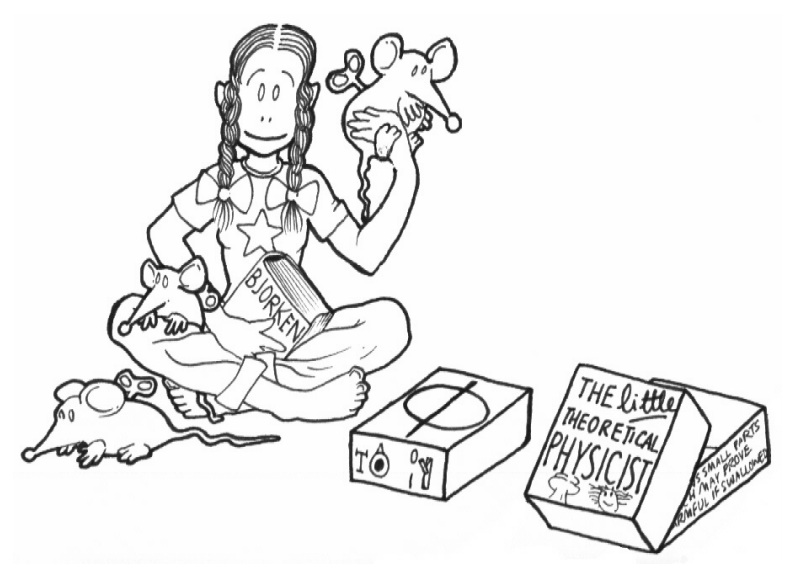Michele's publications
Thesis for Italian Laurea in Physics
Developments in the Notion of Vacuum: Electrodynamics of Accelerated Systems, Unruh-Hawking Radiation and Black Hole Thermodynamics (thesis in Italian)
Starting from the early seventies, a precise analogy has been found between classical thermodynamics and the general relativistic laws governing black hole dynamics. In fact, as for ordinary thermodynamics, it is possible to write the "four laws of black hole thermodynamics", where black hole mass plays the role of energy, while the superficial gravity and the area of the event horizon take the place of temperature and entropy.
Following the 1975 theoretical discovery of Hawking radiation (consisting in the emission, by black holes, of a thermal spectrum of quantum particles at a temperature proportional to the superficial gravity of the event horizon), black hole thermodynamics has come to be regarded as much more than a simple analogy. A more accurate statement of the Hawking effect, actually, is the following: when one quantizes a classical field theory on the background of a black hole space-time, one finds that the field's vacuum state, as defined according to measurements performed at "early times", appears to the "late" observers in the external region of the black hole as a thermal bath of particles outgoing from the black hole's event horizon.
Quite surprisingly, particle production cannot be ascribed to a direct interaction between the quantum field and the gravitational one: rather, it appears as a by-product of the different definition of "particle" by early and late observers. This fact has led us to ponder what we called "Einstein's conflictual heredity": on the one hand, the affirmation of Poincaré group as the global symmetry group of space-time has been seminal to the great theoretical synthesis of the first half of this century, begun with the full acknowledgement of Maxwell's electro-magnetism as a special-relativistic theory, and beautifully climaxed with quantum field theory. The concepts and interpretative paradigms of these theories refer naturally to the privileged class of special-relativistic inertial observers.
On the other hand, general relativity equivalence principle does warrant Lorentz group as a simmetry group, but only locally. This becomes a problem when one tries to generalise to curved space-time geometries the concepts and paradigms inherited from special-relativistic theories, especially when these are based on the global symmetries of Minkowski space-time.
This is the case, in Maxwell's theory, of the concept of "radiation", and, in quantum field theory, of the notion of "particle". It is interesting to notice that a qualitative understanding of the difficulty can be gained already in the simple case of a constant gravitational field, which can be simulated in special relativity using accelerated references frames (apparent fields). In classical electro-magnetism, one finds that the apparently sound and well-established notion of radiation of an accelerated particle is not invariant with respect to transformations between inertial and accelerated reference frames.
For special-relativistic quantum field theory, a similar phenomenon is found in Unruh effect, namely the measurement, by a uniformly accelerated observer, of a thermal radiation in the vacuum state of the quantum field: thus the usual mathematical definition of "particle" (based on Fourier decomposition of field operators) cannot be translated to accelerated reference frames. By means of a series of original "theoretical experiments", based on a simple model of semiclassical detector (a quantum point-like system moving on a given world-line in Minkowski space-time), we have investigated the meaning that can be given operatively to the concept of "particle"; we have found it in the discrete energy exchanges between the detectors and the field: only in flat space-time does this notion adhere to the usual mathematical definition. We have then extended Unruh effect to a more general class of accelerated observers (i.e., constant curvature world-lines), obtaining the quasi-thermal observed spectra.
More generally, quantum field theory on curved space-times removes the last doubts as to the arbitrariness of a "particle" concept in space-times other than Minkowski. It also provides a mathematical scheme for a more convincing formulation and understanding of Hawking effect. To further enlighten this question from our operative viewpoint, we have examined the measurements that a detector orbiting a black hole would report.
A weakness in black hole thermodynamics is still the absence of a satisfactory statistical interpretation of their "entropy" in terms of the dynamics of the matter fields on black hole geometries, or, even better, of the quantum gravitational dynamics of the black hole space-time itself. We end our work with a review of some of the most interesting proposals towards this program.
It is amazing to think that most of the physics we have examined is, in some sense, physics of the void: Hawking and Unruh effects are measurements on the vacuum state of the quantum field (which reveals unexpected dynamical properties); the absence of "particles" and "radiation" (which, by common sense, we would use to define void) proves elusive and badly defined; finally, black holes are solutions of the vacuum Einstein equations: they are pure geometry, yet they possess some attributes that we feel entitled to call mass, temperature, and entropy!
- Corso di Laurea in Fisica, 1992/1996, Università di Parma, Facoltà di Scienze Matematiche, Fisiche e Naturali.
- Advisor: Prof. Massimo Pauri; co-advisors: Prof. Antonio Scotti, Dott. Roberto de Pietri. Defended on April 28, 1997.
- Cite:
Mutamenti nella Nozione di Vuoto: Elettrodinamica dei Sistemi Accelerati, Radiazione di Unruh--Hawking e Termodinamica dei Buchi Neri
M. Vallisneri
thesis, laurea in physics (University of Parma, Italy, 1997) 223 pp. [+]

Illustration by Kola Krauze. The physics enthusiast Beatrice appears in several Galilean dialogues throughout the thesis.
Back to publications.
© M. Vallisneri 2014 — last modified on 2012/10/19